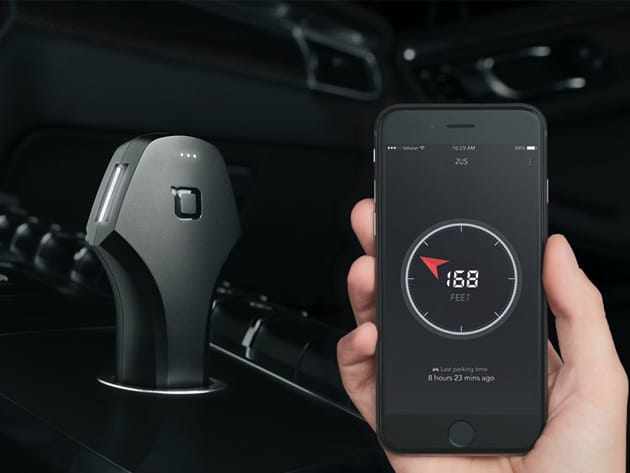Zus Smart Car Charger & Locator for $29
November 1, 2016 / by Marco / Categories : Business, deals, design, entrepreneur, website


KEY FEATURES
This little gadget truly works double duty. It charges any device on-the-go using an ultra-fast USB that juices batteries at two-times normal speed. Then, using its smartphone app, Zus acts as a homing device for finding your car where you last left it. No more searching parking lots for hours, and no more running out of phone battery when you get there. You are totally, technically covered.
IF 2016 Design Award Winner
2016 Red Dot Design Award Winner
- Utilizes low-energy Bluetooth
- Navigates you right to your car w/ the easy-to-use app interface
- Continues to work when it’s plugged into the socket w/ or without the ignition on
- Provides durability w/ military grade titanium coating
- Informs you when your parking meter is about to expire
- Features top-quality lighting for visibility in dark environments
- Charges 2x normal charging speeds
- Actively monitors your car’s battery health
- Shares your parking location w/ your spouse or friends continuously
- Doesn’t require any data plan
- Works in high temperatures w/ built-in cooling system
- Designed in Germany & made with German materials
PRODUCT SPECS
Details & Requirements
- Max 4.8A output
- Shipping weight: 4.2 oz
Includes:
- Zus Smart Car Charger & Locator
Compatibility
- Bluetooth-capable devices
OTHER ARTICLES YOU MAY LIKE

CHATGPT USEFUL FEATURE: TEMPORARY CHAT
Everyday use of ChatGPT naturally trains you to think in threads. You ask a question, you get an answer, you refine the prompt, and the conversation accretes context. It’s one of the reasons ChatGPT feels more like a companion than a search box: it remembers what you said so it can respond appropriately next time […]
read more
A SMALL BUTTON, A BIG MILESTONE: MY FIRST SUPER THANKS
Every creator has milestones that feel both modest and momentous. Your first upload. Your first comment. Your first subscriber. And then one day, among the usual notifications, a new one pops up: your first Super Thanks. Mine came from a generous viewer, Frank Castlenut, who left a donation of five dollars alongside a kind note. […]
read more

